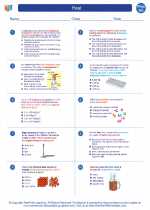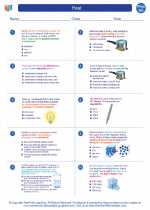Ions in Physics
An ion is an atom or molecule that has gained or lost one or more electrons. This results in the atom or molecule having a net positive or negative electrical charge. Ions play a crucial role in many areas of physics, including electricity, magnetism, and chemical reactions.
Types of Ions
Ions can be categorized into two types:
- Cations: These are ions that have lost one or more electrons, resulting in a net positive charge. For example, when a sodium atom loses an electron, it forms a sodium cation with a +1 charge (Na+).
- Anions: These are ions that have gained one or more electrons, resulting in a net negative charge. For example, when a chlorine atom gains an electron, it forms a chloride anion with a -1 charge (Cl-).
Formation of Ions
Ions are formed through various processes, including:
- Ionization: Atoms can become ions through the gain or loss of electrons. This can occur through processes such as chemical reactions, radiation, or thermal energy.
- Electrolysis: In this process, electrical energy is used to drive a non-spontaneous chemical reaction, leading to the formation of ions.
Properties of Ions
Ions exhibit several important properties, including:
- Electric Charge: Ions carry a positive or negative electrical charge, which allows them to interact with electric and magnetic fields.
- Chemical Reactivity: Ions play a crucial role in chemical reactions, as they can form bonds with other ions or atoms to create new compounds.
- Conductivity: In solutions, ions can conduct electricity due to their ability to move and carry charge.
Study Guide
To understand ions in physics, students should focus on the following key concepts:
- Definition of ions and their types (cations and anions).
- Formation of ions through ionization and electrolysis.
- Properties of ions, including electric charge, chemical reactivity, and conductivity.
- Examples of ions and their role in various physical and chemical processes.
Students can practice their understanding of ions through exercises that involve identifying ions, predicting ion formation in chemical reactions, and analyzing the behavior of ions in electric and magnetic fields.
.◂Physics Worksheets and Study Guides High School. Heat
The resources above cover the following skills:
PHYSICAL SCIENCE (NGSS)
Energy
Students who demonstrate understanding can:
Create a computational model to calculate the change in the energy of one component in a system when the change in energy of the other component(s) and energy flows in and out of the system are known.
Develop and use models to illustrate that energy at the macroscopic scale can be accounted for as either motions of particles or energy stored in fields.



